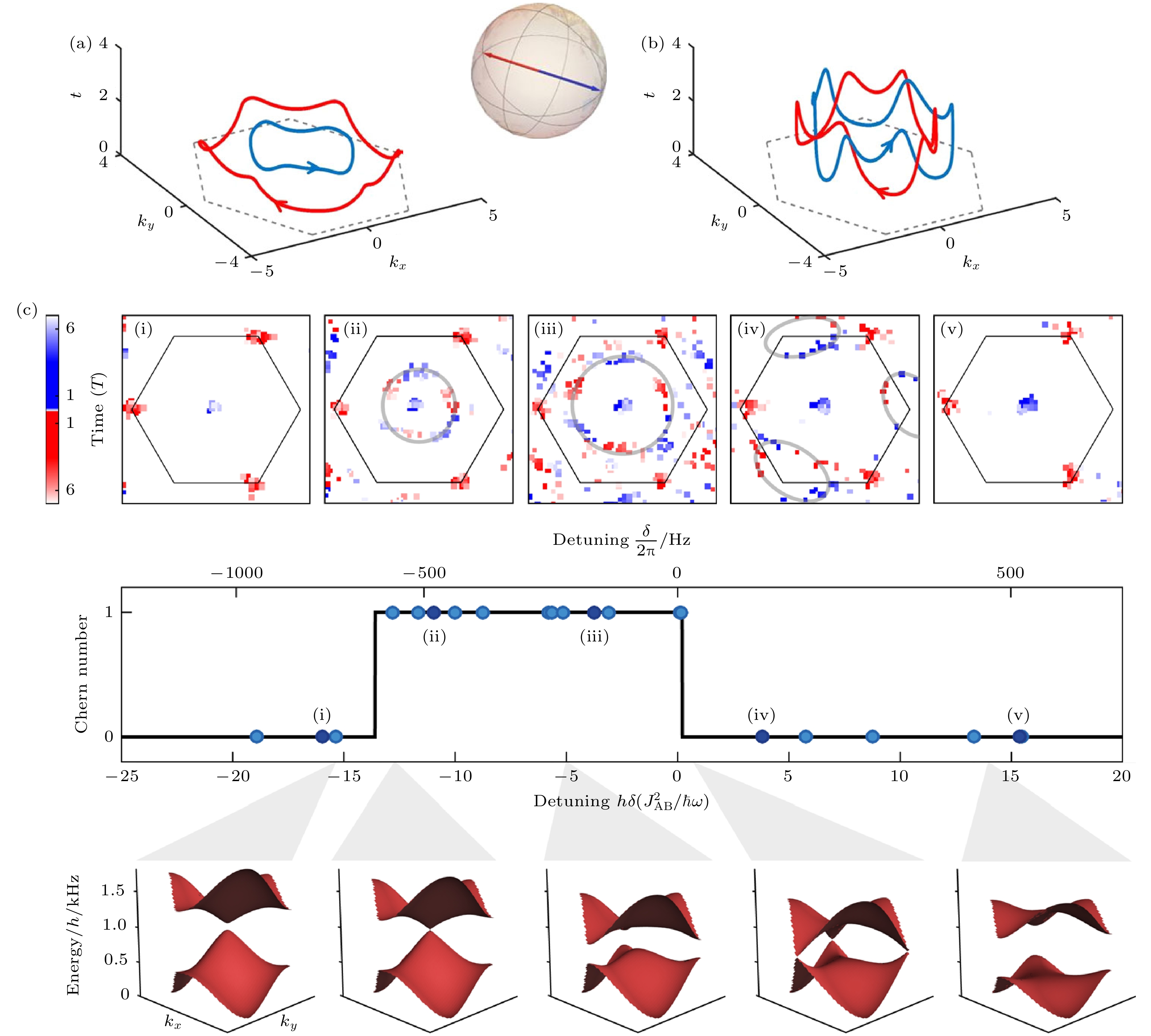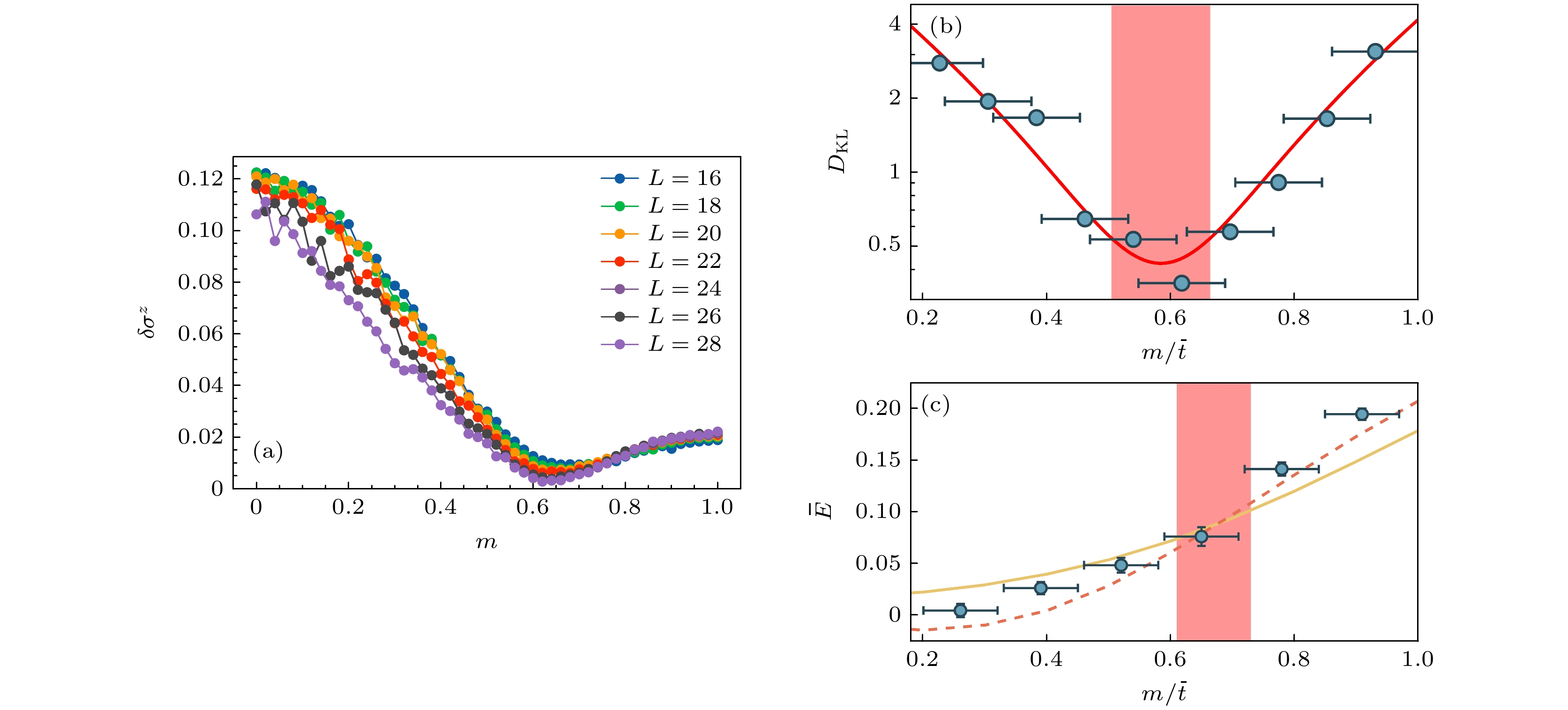-
Combining quantum many-body physics and nonequilibrium physics is an important opportunity and challenge for current physics research. Nonequilibrium quantum many-body physics is not only a subject of common interest to many branches of physics but also an indispensable theoretical foundation for developing emergent quantum technologies. Cold atom system provides an ideal platform for studying nonequilibrium quantum many-body physics. The advantages of cold atom system, as well as other synthetic quantum systems, are reflected in studying various nonequilibrium processes such as the thermalization of isolated system, dissipation induced by coupling to the environment, ramping, quench, or periodically driving physical parameters of a system. In this work, three examples from our research are discussed to show how the study of nonequilibrium quantum many-body physics with cold atoms can help us go beyond the existing framework of topological physics, uncover new methods of detecting quantum many-body correlations, and enrich the physical content of gauge theory. Such a research concerns the fundamental properties of quantum many-body system, such as topology and correlation, utilizes the advantages of cold atomic system to achieve a quantitative comparison between theory and experiment, and aims at discovering universal physical rules for nonequilibrium quantum many-body process, which can be extended to condensed matter and nuclear matter systems.
-
Keywords:
- ultracold atoms /
- quantum many-body physics /
- nonequilibrium dynamics
[1] Abanin D A, Altman E, Bloch I, Serbyn M 2019 Rev. Mod. Phys. 91 021001
 Google Scholar
Google Scholar
[2] Altman E 2018 Nat. Phys. 14 979
 Google Scholar
Google Scholar
[3] Serbyn M, Abanin D A, Papić Z 2021 Nat. Phys. 17 675
 Google Scholar
Google Scholar
[4] Yao N, Nayak C 2018 Phys. Today 71 40
 Google Scholar
Google Scholar
[5] Haldane F D M 1988 Phys. Rev. Lett. 61 2015
 Google Scholar
Google Scholar
[6] Zheng W, Zhai H 2014 Phys. Rev. A 89 061603(R
 Google Scholar
Google Scholar
[7] Jotzu G, Messer M, Desbuquois R, Lebrat M, Uehlinger T, Greif D, Esslinger T 2014 Nature 515 237
 Google Scholar
Google Scholar
[8] Wang C, Zhang P, Chen X, Yu J, Zhai H 2017 Phys. Rev. Lett 118 185701
 Google Scholar
Google Scholar
[9] Tarnowshi M, Unal F N, Flaschner N, Rem B S, Eckardt A, Sengstock K, Weitenberg C 2019 Nat. Commun. 10 1728
 Google Scholar
Google Scholar
[10] Pan L, Chen X, Chen Y, Zhai H 2020 Nat. Phys. 16 767
 Google Scholar
Google Scholar
[11] Zhao Y J, Tian Y, Ye J L, Wu Y, Zhao Z H, Chi Z H, Tian T, Yao H P, Hu J Z, Chen Y, Chen W L 2023 arXiv: 2309.10257v1 [cond-mat. quant-gas
[12] Liang L, Zheng W, Yao R, Zheng Q, Yao Z, Zhou T G, Huang Q, Zhang Z, Ye J, Zhou X, Chen X, Chen W L, Zhai H, J. Hu J Z 2022 Sci. Bull. 67 2550
 Google Scholar
Google Scholar
[13] Bernein H, Schwartz S, Keesling A, Levine H, Omran A, Pichler H, Choi S, Zibrov A S, Endres M, Greiner M, Vuletic V, Lukin M D 2017 Nature 551 579
 Google Scholar
Google Scholar
[14] Yang B, Sun H, Ott R, Wang H Y, Zache T V, Halimeh J C, Yuan Z S, Hauke P, Pan J W 2020 Nature 587 392
 Google Scholar
Google Scholar
[15] Cheng Y, Liu S, Zheng W, Zhang P, Zhai H 2022 PRX Quantum 3 040317
 Google Scholar
Google Scholar
[16] Yao Z Y, Pan L, Liu S, Zhai H 2022 Phys. Rev. B 105 125123
 Google Scholar
Google Scholar
[17] Wang H Y, Zhang W Y, Yao Z, Liu Y, Zhu Z H, Zheng Y G, Wang X K, Zhai H, Yuan Z S, Pan J W 2023 Phys. Rev. Lett. 131 050401
 Google Scholar
Google Scholar
-
图 1 两种不同拓扑的可观测量的轨迹, “缠绕数”分别是0 (a)和1(b), 分别对应平庸和非平庸的哈密顿量拓扑[8]; (c) 汉堡大学实验测量的动力学轨迹, 以及对应的拓扑数和相应的平衡态能带[9]
Figure 1. Trajectories of a physics observable during unitary evolution under two topologically difference Hamiltonians, the linking numbers are zero (a) or one (b), corresponding to topologically trivial and nontrivial Hamiltonians, respectively[8]; (c) the dynamical trajectories measured by the Hamburg University group, and the corresponding topological number and equilibrium band structure of the Hamiltonian[9].
图 2 (a) 理论预言在一维玻色气体中, 加入耗散以后, 粒子数的损失随着时间增长, 服从亚指数函数的形式, 插图是亚指数函数的指数随着相互作用的变化, 可以体现系统的“反常维度”[10]; (b) 清华实验组测量的一维玻色气体中, 加入耗散以后粒子数的减少, 满足亚指数函数形式. 不同曲线是不同的相互作用参数, 其给出的拟合指数是不一样的, 可以从中测得系统的“反常维度”及其随相互作用的强度的变化[11]
Figure 2. (a) Theoretical predication for one-dimensional Bose gas, the decay of particle number obeys a stretched exponential behavior when adding dissipation. The inset shows how the exponent of the stretched exponential function changes as the interaction parameter varies, revealing the anomalous dimension of the system[10]. (b) The experimental results from the Tsinghua University group, the observed atom number obeys a stretched exponential form. Different curves correspond to different interaction parameters and the fitting yields different exponents, from which one can measure how the anomalous dimension changes as the interaction parameter varies [11].
图 3 (a) 理论预言在一维U(1)格点规范模型中, 可观测量对热化的偏离和系统中物质场质量m之间的关系, 只有在m = 0.655附近的相变点, 才出现完全的热化[16]; (b) 实验结合有限尺度变换得到的平衡态相变点的位置[17]; (c)实验测量动力学过程中长时间物理量的值(数据点), 和预期的热化值(实线)的比较[17]; (b)和(c)的对比验证了完全热化只在相变点附近发生
Figure 3. (a) Theoretical prediction for one-dimensional U(1) lattice gauge theory, the deviation from thermalization and the mass of matter field are related, the system fully thermalizes only around m=0.655 at the phase transition point[16]; (b) experimental determination of the phase transition point with the help of finite size scaling[17]; (c) experimental measurement of long time saturation value (data points) of the physical observable, compared with the expected thermalization value (solid line) [17]; the comparison between (b) and (c) show full thermalization takes place only around the quantum critical point.
-
[1] Abanin D A, Altman E, Bloch I, Serbyn M 2019 Rev. Mod. Phys. 91 021001
 Google Scholar
Google Scholar
[2] Altman E 2018 Nat. Phys. 14 979
 Google Scholar
Google Scholar
[3] Serbyn M, Abanin D A, Papić Z 2021 Nat. Phys. 17 675
 Google Scholar
Google Scholar
[4] Yao N, Nayak C 2018 Phys. Today 71 40
 Google Scholar
Google Scholar
[5] Haldane F D M 1988 Phys. Rev. Lett. 61 2015
 Google Scholar
Google Scholar
[6] Zheng W, Zhai H 2014 Phys. Rev. A 89 061603(R
 Google Scholar
Google Scholar
[7] Jotzu G, Messer M, Desbuquois R, Lebrat M, Uehlinger T, Greif D, Esslinger T 2014 Nature 515 237
 Google Scholar
Google Scholar
[8] Wang C, Zhang P, Chen X, Yu J, Zhai H 2017 Phys. Rev. Lett 118 185701
 Google Scholar
Google Scholar
[9] Tarnowshi M, Unal F N, Flaschner N, Rem B S, Eckardt A, Sengstock K, Weitenberg C 2019 Nat. Commun. 10 1728
 Google Scholar
Google Scholar
[10] Pan L, Chen X, Chen Y, Zhai H 2020 Nat. Phys. 16 767
 Google Scholar
Google Scholar
[11] Zhao Y J, Tian Y, Ye J L, Wu Y, Zhao Z H, Chi Z H, Tian T, Yao H P, Hu J Z, Chen Y, Chen W L 2023 arXiv: 2309.10257v1 [cond-mat. quant-gas
[12] Liang L, Zheng W, Yao R, Zheng Q, Yao Z, Zhou T G, Huang Q, Zhang Z, Ye J, Zhou X, Chen X, Chen W L, Zhai H, J. Hu J Z 2022 Sci. Bull. 67 2550
 Google Scholar
Google Scholar
[13] Bernein H, Schwartz S, Keesling A, Levine H, Omran A, Pichler H, Choi S, Zibrov A S, Endres M, Greiner M, Vuletic V, Lukin M D 2017 Nature 551 579
 Google Scholar
Google Scholar
[14] Yang B, Sun H, Ott R, Wang H Y, Zache T V, Halimeh J C, Yuan Z S, Hauke P, Pan J W 2020 Nature 587 392
 Google Scholar
Google Scholar
[15] Cheng Y, Liu S, Zheng W, Zhang P, Zhai H 2022 PRX Quantum 3 040317
 Google Scholar
Google Scholar
[16] Yao Z Y, Pan L, Liu S, Zhai H 2022 Phys. Rev. B 105 125123
 Google Scholar
Google Scholar
[17] Wang H Y, Zhang W Y, Yao Z, Liu Y, Zhu Z H, Zheng Y G, Wang X K, Zhai H, Yuan Z S, Pan J W 2023 Phys. Rev. Lett. 131 050401
 Google Scholar
Google Scholar
Catalog
Metrics
- Abstract views: 7510
- PDF Downloads: 369
- Cited By: 0















 DownLoad:
DownLoad:


